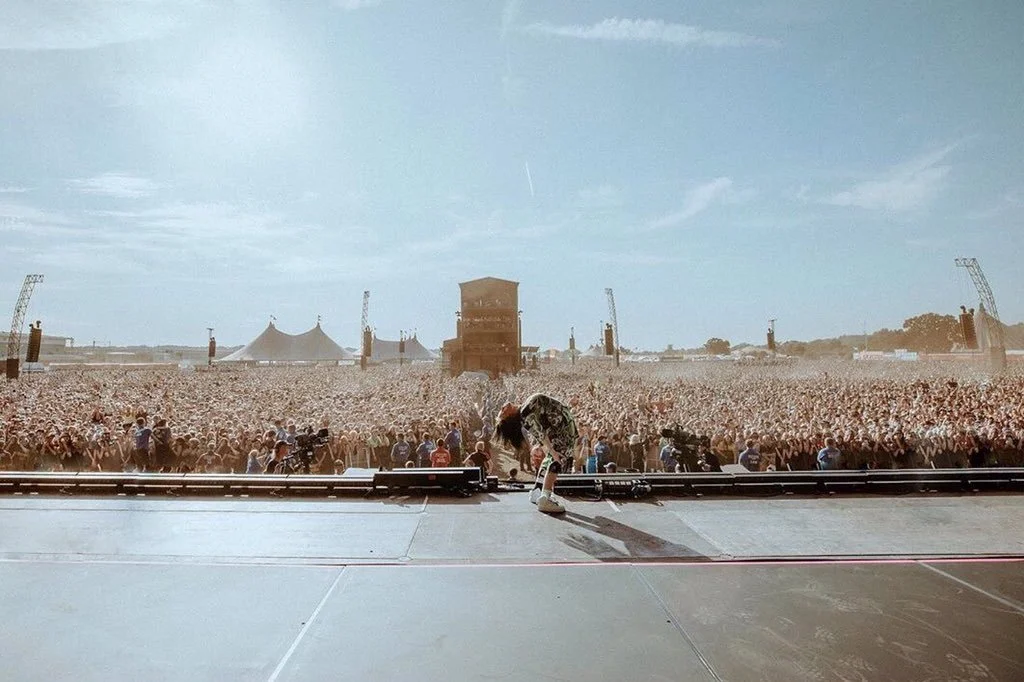From Jazz Marquee to Generational Pulse Check
Reading Festival began in the ’60s as a jazz and blues gathering. Leeds joined in 1999. Since then, the twin events have grown into more than a bank-holiday blowout - they’re a cultural barometer, tracking and influencing the tastes of each new generation.
What sets Reading & Leeds apart is their appetite for risk. This is a festival brand that rewrites its own rulebook: genre swerves, surprise stage upgrades, and headliner choices that can split opinion but shift culture. Survival has never meant playing safe - it’s meant booking bold and delivering it with world-class spectacle.
Risk as a Brand Strategy
While many legacy festivals cling to their comfort zones, Reading & Leeds thrive on calculated disruption:
1992 - Public Enemy on the main stage, shattering the rock-only mould.
2000 - Eminem at peak controversy, a full-tilt rap takeover.
2019 - Billie Eilish upgraded mid-season to main stage, cementing Gen Z’s place at the centre of the crowd.
These weren’t just names on a poster - they were line-up disruptors, acts that redefined who the festival was for.
Top 5 Culturally Defining Performances
Nirvana (1992) - Kurt Cobain’s wheelchair entrance; a farewell steeped in irony and myth, marking the peak of grunge’s cultural dominance.
The Stone Roses (1996) - Final gig before hiatus; Britpop’s emotional curtain call.
Public Enemy (1992) - Politically urgent, genre-busting, proof the festival could hold more than guitars.
Beastie Boys (1998) - Hip-hop cemented as a Reading mainstay, even amid purist resistance.
Kendrick Lamar (2015) - A lyricist at the top of his game on a historically rock stage, signalling a new order.
Generational Pivot Bookings - The Evolution of Relevance
These are the moves that didn’t just fill a slot, but reset the festival’s centre of gravity:
Post Malone (2018) - Streaming-era stardom meets rock-festival main stage.
Stormzy (2021) - Grime royalty, a headline built on UK cultural pride.
Megan Thee Stallion (2022) - US rap dominance breaking through the rock wall.
Sam Fender (2023) - New-gen British guitar hero with arena-level draw.
Chappell Roan (2025) - TikTok-powered queer pop in full festival bloom.
Production as a Cultural Statement
In recent years, Reading & Leeds have matched big-risk bookings with world-class stagecraft:
Massive LED walls, immersive lighting rigs, stadium-grade sound.
Site redesigns for better flow, safer crowd dynamics, and bigger spectacle.
Dual main stages, killing dead air between headliners.
The result? The experience is as much the draw as the acts themselves.
Survival by Adaptation
When COVID halted live music, Reading & Leeds came back swinging in 2021 with genre-fluid headliners and a wider audience focus. They’ve also rebounded from past crises - from late ’80s pop-booking misfires to Leeds’ licensing battles - each time emerging more relevant.
Why It Matters Ahead of 2025
Next weekend’s line-up - Travis Scott, Hozier, Bring Me The Horizon, Chappell Roan - proves Reading & Leeds are still balancing nostalgia, cultural statements, and calculated risk. They’re not following trends; they’re engineering the crossroads where mainstream and youth culture meet.
The Playbook Reading & Leeds Wrote
Be fearless in booking – Back the future stars early and visibly.
Invest in experience – Treat production as brand equity.
Stay culturally porous – Let the line-up reflect where youth are going, not just where they’ve been.
Leverage risk as relevance – Every wildcard headliner is a chance to make a statement.
Final Take:
Reading & Leeds isn’t just a festival - it’s the UK’s most consistent cultural risk-taker. Its legacy is built on knowing when to gamble, when to swerve, and how to turn those calls into music history. Next weekend will be another test - and another chance for the bank-holiday risk machine to pay off big.
